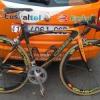WILT will ablate alternative telomere maintenance (ALT) as well.
How?
Same as with telomerase activity: by identifying and characterizing the critical gene(s) involved and knocking one or more of them out. (BTW, I didn't mention it in
our other recent exchange, but another research project that the Methuselah Foundation has been funding is work by Mathias Bollmann at the University of Hamburg to identify ALT. He tested one candidate gene; the result is unpublished, but I can say that it was negative, so the research continues, including bioinformatic screening of genes expressed in ALT cells and other potentially-useful cell types to identify more candidates).
Also, can you give us some idea on the number of stem cells and the frequency of grafting to compensate for ablation?
The replacement would be complete in a given tissue, and as noted earlier in the thread, is likely to be required once a decade or so based on available data.
Finally, you mentioned about the possibility of other physiological telomerase functions. Do you know what these are?
Well, leaving aside
ex silentio arguments, certainly several have been
suggested. Maria Blasco and Steven Artandi have presented data that they interpret as implying a role in stem cell differentiation and/or mobilization (1-3); some of this may just be critically short telomeres rather than enzyme activity, but more importantly, all of these studies used non-physiologically high TERT expression , which may simply be mitogenic (as is, say, pokeweed) without being actually telling us anything about the normal, regulated
in vivo function of telomerase or its subcomponents. Note that there is cell cycle-dependent TERT expression in these (mouse) cells, and yet (again) we know that knocking out either subcomponent in mice leaves them fine for several generations until their telomeres actually wear down thru' successive reproductive cycles.
OTOH, more recently (4-6) have presented a much more convincing case for a non-TMM function of TERT in mitochondrial function and mt and cellular stress resistance. So the question certainly remains open; again, this is why (as also mentioned in
our other recent exchange) the Foundation is funding K. Lenhard Rudolph to test for the possible significance of such functions in an early model of WILT (replacement of native bone marrow in mice with TERT-/- HSCs). Fortunately, these same studies show the RNA subunit of the enzyme to be dispensable for these apparent functions (that being one of their strengths), so if it there is indeed such a non-TMM function of TERT, we would still have the knockout of TERC as an alternative.
-Michael
References1. Conditional telomerase induction causes proliferation of hair follicle stem cells.
Sarin KY, Cheung P, Gilison D, Lee E, Tennen RI, Wang E, Artandi MK, Oro AE, Artandi SE.
Nature. 2005 Aug 18;436(7053):1048-52.
PMID: 16107853 [PubMed - indexed for MEDLINE]
2. Effects of telomerase and telomere length on epidermal stem cell behavior.
Flores I, Cayuela ML, Blasco MA.
Science. 2005 Aug 19;309(5738):1253-6. Epub 2005 Jul 21.
PMID: 16037417 [PubMed - indexed for MEDLINE]
3. Telomerase deficiency impairs differentiation of mesenchymal stem cells.
Liu L, DiGirolamo CM, Navarro PA, Blasco MA, Keefe DL.
Exp Cell Res. 2004 Mar 10;294(1):1-8.
PMID: 14980495 [PubMed - indexed for MEDLINE]
4. Ahmed S, Passos JF, Birket MJ, Beckmann T, Brings S, Peters H, Birch-Machin MA, von Zglinicki T, Saretzki G.
Telomerase does not counteract telomere shortening but protects mitochondrial function under oxidative stress.
J Cell Sci. 2008 Apr 1;121(Pt 7):1046-53. Epub 2008 Mar 11.
PMID: 18334557 [PubMed - indexed for MEDLINE]
5. Mitochondrial Telomerase Reverse Transcriptase Binds to and Protects Mitochondrial DNA and Function From Damage.
Haendeler J, Dröse S, Büchner N, Jakob S, Altschmied J, Goy C, Spyridopoulos I, Zeiher AM, Brandt U, Dimmeler S.
Arterioscler Thromb Vasc Biol. 2009 Mar 5. [Epub ahead of print]
PMID: 19265030 [PubMed - as supplied by publisher]
6. TERT promotes cellular and organismal survival independently of telomerase activity.
Lee J, Sung YH, Cheong C, Choi YS, Jeon HK, Sun W, Hahn WC, Ishikawa F, Lee HW.
Oncogene. 2008 Jun 12;27(26):3754-60. Epub 2008 Jan 28.
PMID: 18223679 [PubMed - indexed for MEDLINE]

















































